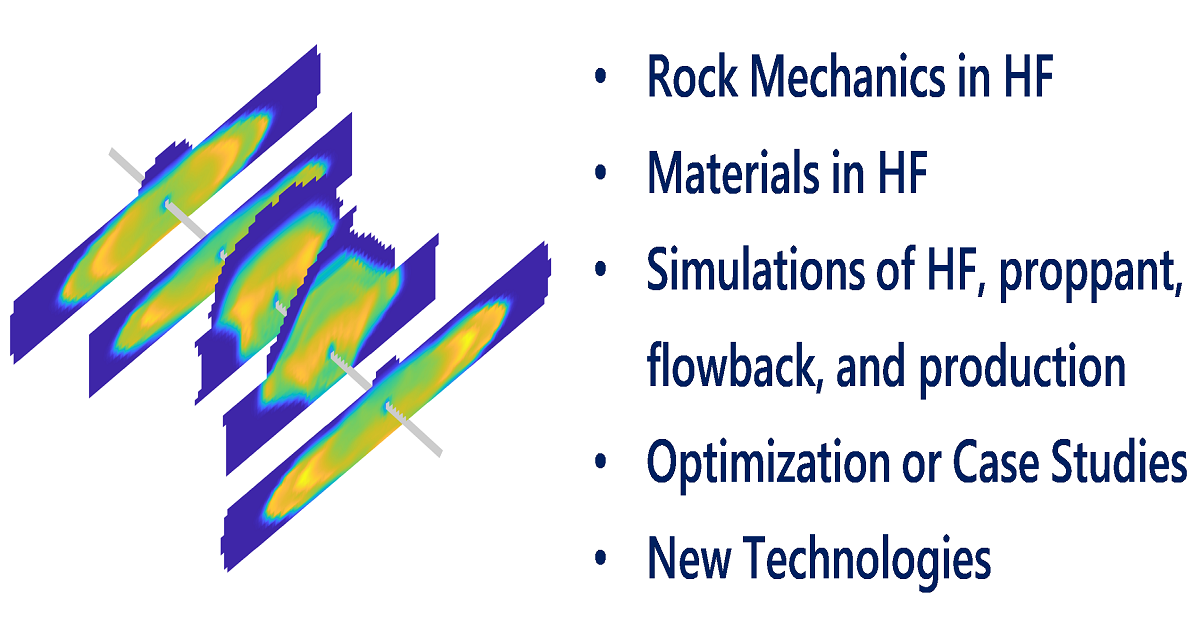Petroleum Engineering: Reservoir Fracturing Technology and Numerical Simulation
A special issue of Processes (ISSN 2227-9717). This special issue belongs to the section "Chemical Processes and Systems".
Deadline for manuscript submissions: closed (28 December 2022) | Viewed by 26392

Special Issue Editors
Interests: hydraulic fracturing; fracture propagation
Special Issues, Collections and Topics in MDPI journals
Interests: hydraulic fracturing; rock mechanics
Special Issues, Collections and Topics in MDPI journals
Special Issue Information
Dear Colleagues,
Hydraulic fracturing is a technique that can provide space for oil and gas flow by pumping fracturing fluid into the reservoir to fracture rock and filling proppant to create fractures or fracture nets. This technology is of great significance to improve the oil and gas recovery. Hydraulic fracturing is widely used in the field of oil and gas development: end-sand-fallout fracturing can be used to prevent sand production in high-permeability reservoirs. Hydraulic fracturing can connect the dead oil. Volume fracturing is used to improve the stimulated reservoir volume (SRV) of tight and unconventional reservoirs to realize commercial exploitation. The progress of hydraulic fracturing technology, including fracturing procedures, fracturing materials and fracturing equipment, is promoting global oil and gas exploitation into a new era.
This Special Issue on “Petroleum Engineering: Reservoir Fracturing Technology and Numerical Simulation” will collect research articles and comprehensive reviews focused on the aforementioned topics.
Topics include, but are not limited to:
- Rock mechanics research of hydraulic fracturing, including the simulation of geomechanical parameters, the rock mechanical response of oil and gas reservoir fracturing, and the optimization of fracture parameters.
- Research on the development mode of reservoirs after fracturing, including the flow simulation of complex fracture networks and the optimization of production parameters after fracturing.
- Research of fracturing materials, including low-friction and low-damage fracturing fluids, new temporary plugging agents, and new proppant materials.
- Research of hydraulic fracturing methods, including unconventional reservoir volume fracturing theory, manual control technology, strong dynamic load impact induced volume reconstruction technology, and acid fracturing technology.
- Innovative research and products in hydraulic fracturing equipment, such as new bridge plugs, packers, fracturing string, and fracturing vehicles.
Prof. Dr. Tiankui Guo
Dr. Ming Chen
Guest Editors
Manuscript Submission Information
Manuscripts should be submitted online at www.mdpi.com by registering and logging in to this website. Once you are registered, click here to go to the submission form. Manuscripts can be submitted until the deadline. All submissions that pass pre-check are peer-reviewed. Accepted papers will be published continuously in the journal (as soon as accepted) and will be listed together on the special issue website. Research articles, review articles as well as short communications are invited. For planned papers, a title and short abstract (about 100 words) can be sent to the Editorial Office for announcement on this website.
Submitted manuscripts should not have been published previously, nor be under consideration for publication elsewhere (except conference proceedings papers). All manuscripts are thoroughly refereed through a single-blind peer-review process. A guide for authors and other relevant information for submission of manuscripts is available on the Instructions for Authors page. Processes is an international peer-reviewed open access monthly journal published by MDPI.
Please visit the Instructions for Authors page before submitting a manuscript. The Article Processing Charge (APC) for publication in this open access journal is 2400 CHF (Swiss Francs). Submitted papers should be well formatted and use good English. Authors may use MDPI's English editing service prior to publication or during author revisions.






